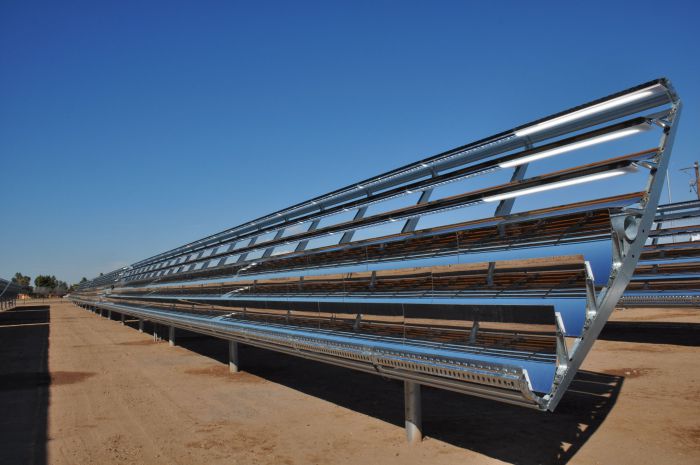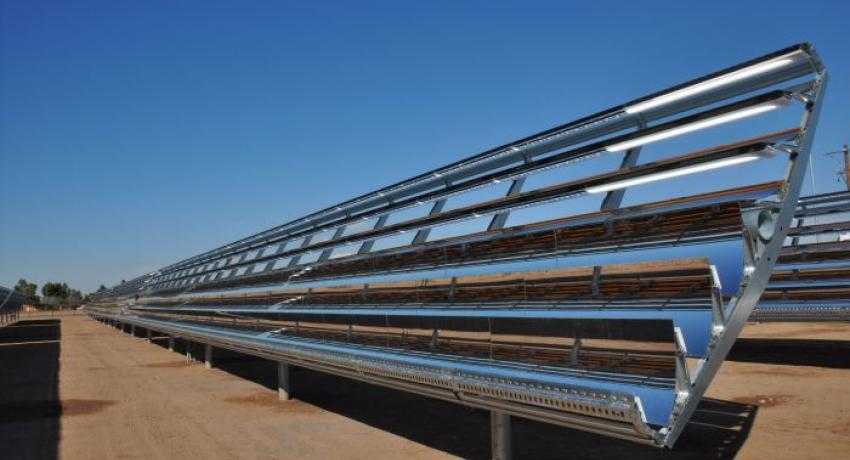SunPower completes first commercial deployment of its concentrating PV system
 Friday (April 5) SunPower and the Salt River Project (SRP) dedicated the first commercial deployment of its low-concentrating photovoltaic C7 Tracker system at Arizona State University in Mesa, Ariz. The company introduced the systems in late 2011, which are a departure from the company’s standard PV-modules and from most other forms of concentrating PV.
Friday (April 5) SunPower and the Salt River Project (SRP) dedicated the first commercial deployment of its low-concentrating photovoltaic C7 Tracker system at Arizona State University in Mesa, Ariz. The company introduced the systems in late 2011, which are a departure from the company’s standard PV-modules and from most other forms of concentrating PV.
"The SunPower C7 Tracker leverages SunPower's depth of experience developing reliable tracking systems and delivers bankable technology with guaranteed performance," said Howard Wenger, SunPower president, regions. "We applaud our partners on this project in selecting this advanced technology platform that will deliver cost-effective renewable energy in Arizona for the long-term."
The 1 megawatt array is located at ASU’s Polytechnic campus where it will provide enough electricity for about 225 residential SRP customers. However, the university is purchasing all the power from the systems under a purchase-power agreement with SRP. The system is still owned by SunPower, however, and SRP has a PPA with SunPower for all the power it produces.
"At SRP we continue to look for new and innovative ways to diversify our portfolio with sustainable sources of energy that best serve our customers in a cost-effective way," said John Sullivan, SRP's chief resource executive. "SunPower's C7 Tracker system is a promising technology that we expect to provide these benefits."
The system is relatively unique in that it’s a low-concentrating PV system, by magnifying the amount of light that hits a row of SunPower’s Maxeon PV cells by seven times. Most concentrating PV systems, like Amonix concentrate the sun by hundreds of times using specialized Fresnel lenses. They also use expensive high-efficiency multi-junction gallium arsenide cells that are often only a couple centimeters in size.
The C7 Trackers use SunPower’s silicon PV cells, which are the most efficient on the market at 22.8 efficiency (the high-efficiency cells can be more than 30 percent efficient). Instead of using a Fresnel lens, the system also uses a series of parabolic mirrors to focus the extra light on the cells. By doing so, the system reduces the amount of expensive PV cells in the device, helping to reduce system costs. For instance, the ASU system only requires 172 kilowatts of cells to produce 1 megawatt of power. SunPower said the system is able to deliver solar power at the lowest levelized costs of electricity (LCOE) available today.




